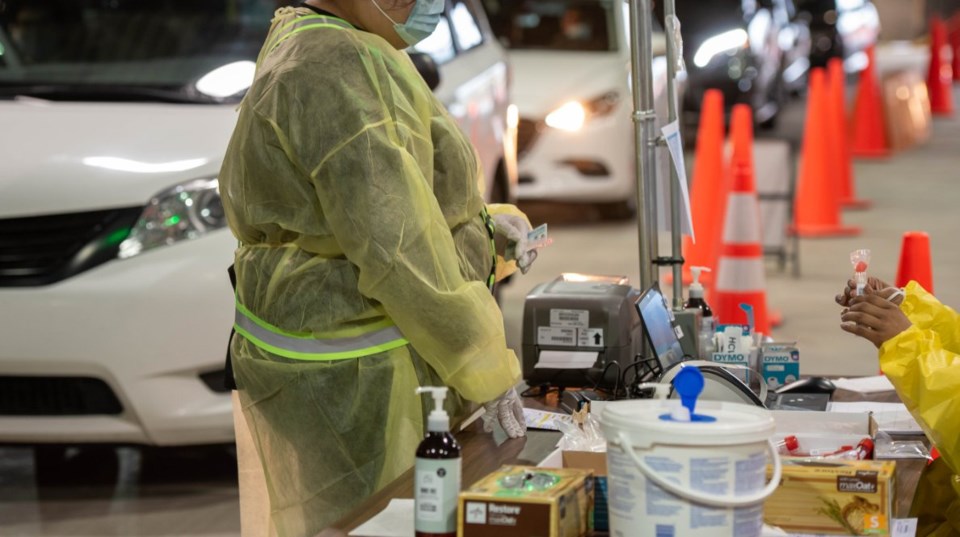New COVID-19 cases continue to drop in Burnaby as testing requirements continue to be tougher.
According to the latest Geographic Distribution of COVID-19 by Local Health Area of Case Residence, Burnaby recorded 389 cases from Jan. 23 to 29, 2022.
From Jan. 16 to 22, 2022, Burnaby saw 498 infections recorded.
The BC Centre for Disease Control website, last updated on Feb. 1, 2022, says testing is recommended for people who are moderate to severely immunocompromised, for those whom a positive result could impact treatment or care or people who are unvaccinated or whose vaccines are not up to date and people who live or work in settings with others who are at high-risk for severe illness.
The BCCDC says if people have mild symptoms, they do not need a test and should stay home and away from others until they feel well enough to go back to regular activities.
But B.C. is expected to receive 6 million COVID-19 rapid test kits by the middle of this month.
“Currently B.C., and this is a change, expects to receive 16,597,515 tests between today, Feb. 1, 2022, and the middle of February. This is an increase from the 15,719,920 that we were expecting as of Jan. 20, 2022, and an increase from the number that we provided last week,” Minister of Health Adrian Dix said on Feb. 2.
“This is good news. Clearly, the supply of tests is substantial but it’s also in flux as orders and deliveries get firmed up by the federal government.”
Still, the tests are being distributed based on a priority list set by public health officials.
The province received more than 2 million kits in the past three days and will be sending out 1.2 million in the next week. 350,000 to replenish supplies at COVID-19 test sites, 100,000 for acute care centres, 260,00 to long-term and continuing care, 130,00 for rural and Indigenous communities, and another 300,000 for K-12 education.
Dix and B.C. public health officer Dr. Bonnie Henry were asked about the more than three million doses being held in supply, and why they aren’t being given to people for more at-home testing.
Henry pointed out that with 600,000 children in the K-12 school system, plus staff, those three million would be used up pretty quickly if they were all shipped out. She also said many are being distributed right now.
Dix made it clear that the three million are not tests that are just sitting around.
“We’ve had tests, in the millions, come in in the last three days. What happens is they come in, we process them and then go out. I laid out in detail where 1.2 million are going this week. So, what you’re seeing is us taking the tests when they arrive, they’re not always consistent on their arrival, and then distributing them to the areas of priority,” he said.
- with files from Cindy White, Castanet



